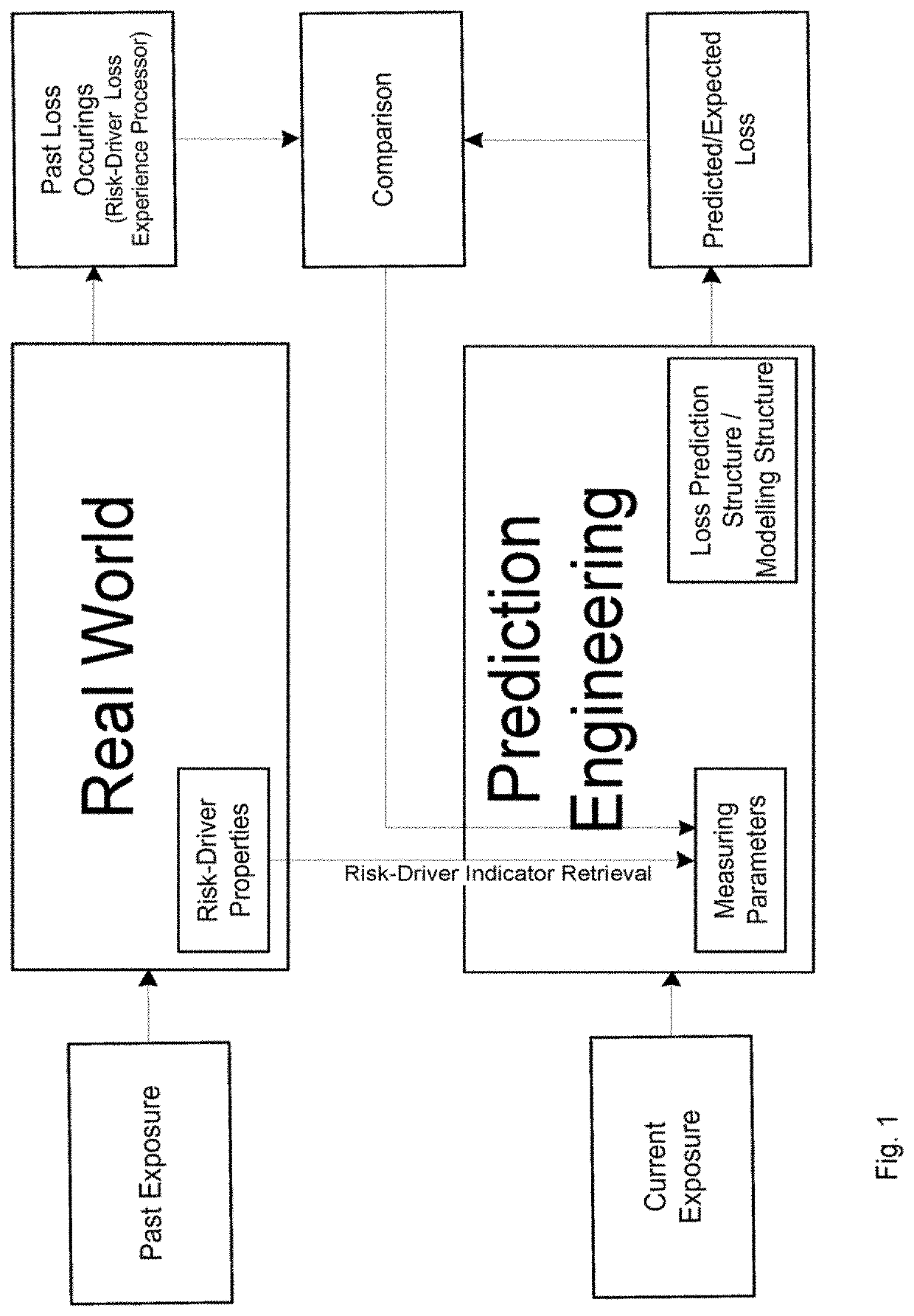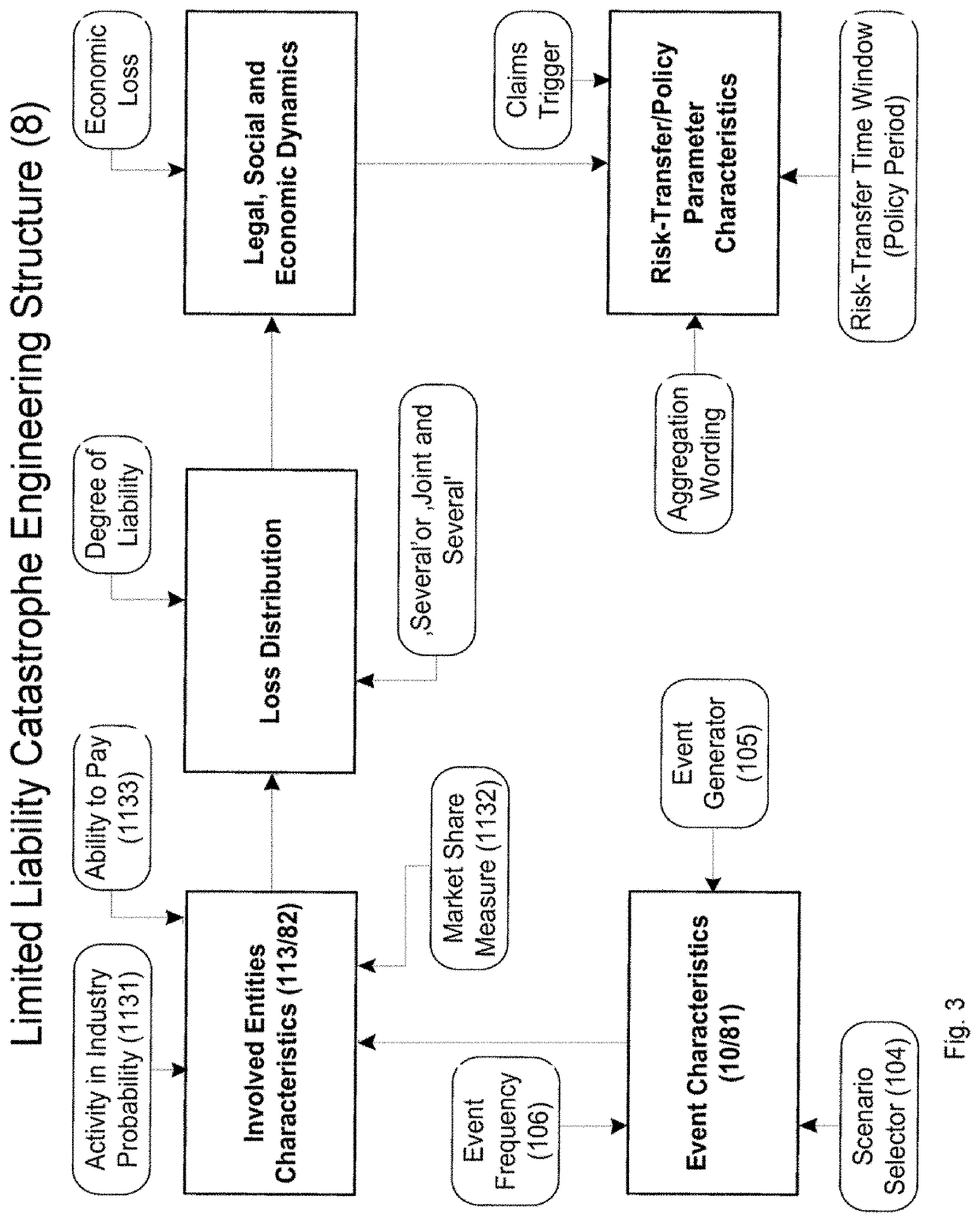Risk splitter and risk quantifying forecast system using a structured forward-looking simulation technique quantifying clashing, long-tail risk events causing casualty loss accumulation and high earning volatility, and method thereof
a risk and forecasting system technology, applied in the field of automatic forecasting and risk splitting, can solve the problems of high cost of capital allocation, the difficulty of automating prediction and modeling of liability catastrophes and risk accumulation, and the difficulty of realizing the probability of occurrence of events causing liability impacts, so as to improve the efficiency of addressing tail risks of reinsured, the effect of better leverage capital allocation
- Summary
- Abstract
- Description
- Claims
- Application Information
AI Technical Summary
Benefits of technology
Problems solved by technology
Method used
Image
Examples
Embodiment Construction
[0046]FIG. 2 schematically illustrates an architecture for a possible implementation of an embodiment of the inventive risk splitter 11 of an automated, liability risk driven system 1 for automated prediction and exposure signaling of associated, catastrophic risk-event-driven or -triggered systems; in particular, automated first- and second-tier risk-transfer systems 5 / 6 transferring risks of catastrophic or operational risk events with a complex, low frequency structure. System 1 is also applicable to other occurrence structures, for example high statistic events that have, however, an occurrence rate with a complex clustering structure. The inventive clash-quantifying, multi-risk assessment and measuring system 1 in combination with the signaling of the automated risk-transfer systems 5 / 6 allow providing a new way of automated protection against accumulating casualty loss and earnings volatility based on measurably occurring risk events technically using a structured forward-look...
PUM
 Login to View More
Login to View More Abstract
Description
Claims
Application Information
 Login to View More
Login to View More - R&D
- Intellectual Property
- Life Sciences
- Materials
- Tech Scout
- Unparalleled Data Quality
- Higher Quality Content
- 60% Fewer Hallucinations
Browse by: Latest US Patents, China's latest patents, Technical Efficacy Thesaurus, Application Domain, Technology Topic, Popular Technical Reports.
© 2025 PatSnap. All rights reserved.Legal|Privacy policy|Modern Slavery Act Transparency Statement|Sitemap|About US| Contact US: help@patsnap.com



